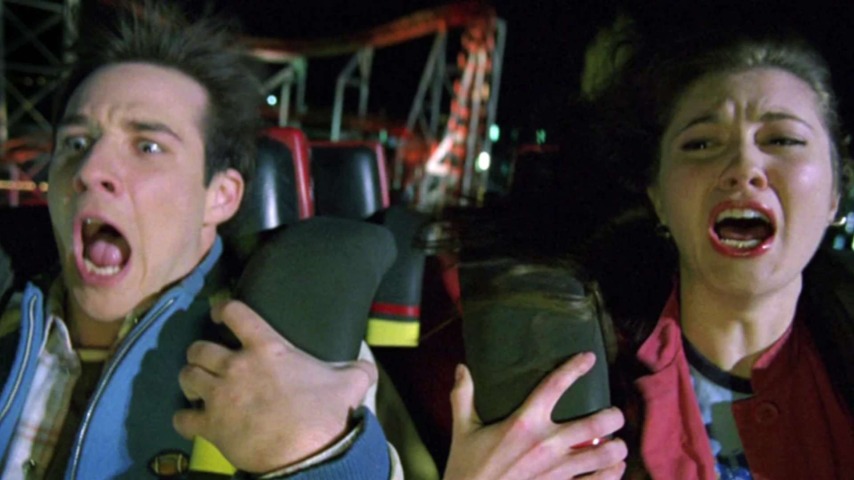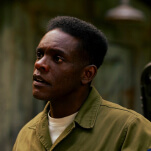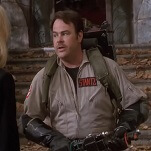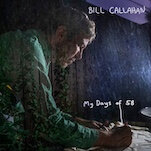With Run The Series, The A.V. Club examines film franchises, studying how they change and evolve with each new installment.
When Scream was released in 1996, it was greeted as a self-referential heir to the slasher movies of the genre’s 1980s heyday, with the masked Ghostface as a successor to Michael Myers, Jason Voorhees, and Freddy Krueger who could also chit-chat about the horror genre in between bouts of silent blade-wielding. But while Scream did kick off a mini-boom in slasher movies (and generally seemed to bring lower-budget horror back into the mainstream), the movie and its sequels were, and remain to this day, structurally distinct from their much-referenced ancestors. Scream movies have yet to delve at all into the supernatural; at their heart, they’re twisty murder mysteries that depend on a climactic unmasking of a very human serial killer (or three). Towards the end of that post-Scream slasher revival cycle, another series would take up the spirit of its ’80s ancestors, right down to the New Line Cinema logo out front, while also paring them down to their ruthless essentials (and surviving for six-and-counting installments). Yes, the new millennium of horror truly began with the spring 2000 release of Final Destination, inspiring a slasher series so dedicated to its kills that it disposes of a corporeal killer entirely. Its unstoppable foe is simply death itself.
It’s a horror concept pure and hooky enough for an X-Files episode (which is where a lot of pure and hooky horror/thriller concepts went during the 1990s). Original screenwriter Jeffrey Reddick did in fact first write his death-stalking idea as a spec script for the popular supernatural investigation show; when a colleague encouraged him to develop it into a film script, it wound up in the hands of veteran X-Files team James Wong and Glen Morgan, who made it their feature debut. (Wong is the director, while both of them are credited alongside Reddick on the final script.) The story is simple: A group of teenagers and their teachers are boarding a flight for a school trip to Paris. Alex (Devon Sawa) starts noticing odd and discomfiting details, which build toward a catastrophic mechanical failure upon takeoff. The plane rips apart and then explodes, killing everyone on board.
But hold on: This was only a premonition, and Alex wakes up back on Flight 180, noticing the same odd details. He panics and tries to warn everyone of impending doom, which gets him and various other intervening figures thrown off the flight at the last minute. As they all stew at the gate, the plane takes off without them, and promptly explodes. This doesn’t mean Alex and the others are safe. Through his unexplained vision, they’ve apparently cheated death itself, which circles back around, killing the survivors one by one in the order they were “supposed” to die on the plane, via a variety of freak accidents.
Actually, there isn’t that much of a variety, in this movie or in the five sequels that repeat more or less the same premise. Final Destination make-up deaths come in three basic forms: elaborate Rube Goldberg-esque chain reactions; sudden, surprise pulverizations; and elaborate Rube Goldberg-esque chain reactions that fake out and fail, followed by a surprise pulverization. It’s almost as if they’re being performed for some unseen audience, eagerly anticipating a gory demise!
So rather than increasing convolutions designed to resurrect some particular slasher figure—death surrounds us, after all, though these movies do suggest that there are times when he’s breathing particularly heavily down our necks—all of the Final Destination convolutions go into the death traps themselves. Admittedly, this doesn’t leave much room for dramatic tension. The victims don’t even typically make it through all five stages of grief; save the oft-paranoid ringleader, other members of the group most often exhibit denial (there’s no way death is actually stalking us), anger (shut up about death actually stalking us!), and bargaining (maybe there’s a way to make it so death isn’t actually stalking us anymore) before death arrives and eliminates any further growth.
This leaves most of them stuck at the bargaining stage, which involves a limited number of strategies, often repeated across the sequels, with little consensus on whether they actually work. If you’re marked for death and someone intervenes again, does the invisible force try again with you, or move on to the next victim with the intent of looping back, catching any stragglers on further rounds? If you “die” and are revived, does that earn you a pass? Or can you avoid death’s wrath by taking someone else’s life? The Final Destination movies answer all of these with a resounding “Eh, maybe!” Similarly far-fetched tactics employed against Freddy or Jason may not work until the 80-minute mark, and may not be permanent if another sequel is called for, but they do offer something to occupy the not-quite-dead teenagers and give them a fighting chance. Though the tone of the Final Destination pictures is often playful, with a gleeful build-and-release construction to their “kills,” they also turn the subtext of doomier slashers into bold text: Nothing works. Death keeps coming. It’s everywhere, and both trying to avoid it and trying to ignore it are equally pointless. No wonder some of the later-period characters in the series seem downright indifferent. They must know the movies will give them almost nothing.
What’s left, then, is the quality of the death traps themselves, as the movies spend most of their 80 to 90 minutes reaching for a kind of oops-all-kills slasher nirvana. On those terms, Final Destination 2 might be the most purely memorable of the bunch, specifically in its opening highway crash involving a truck hauling logs. Everyone who has ever seen Final Destination 2 thinks of that sequence when they see a truck like that in the real world, and the series itself seems aware that it’s a high-water mark; multiple later entries pay visual homage to it, like it’s the ex the franchise will never get over. That opening is probably the strongest single instance of director David R. Ellis applying his extensive skills as a stunt coordinator and second-unit director to one of the B-pictures he directed throughout the 2000s, including Cellular and Snakes On A Plane. In just 12 minutes, he fuses the slasher sensibility with another genre revived around the time of Scream: the disaster movie, allowed in each successive opening sequence to revel in the carnage that most disaster movies must keep a poker face about. (If the individual deaths are like Freddy or Jason kills distilled to their gimmicky essence, the film’s opening sequences are supersized versions of the guy who hits the propeller during his fall from the Titanic deck.) In addition to the lumbering hugeness of the pileup, the second movie’s opening begins a grand tradition of larger-scale Final Destination fake outs; rather than Kimberly (A.J. Cook) using her vision of the accident as motivation to spare her carload of extremely 2003-styled friends, her friends die anyway and her freakout winds up saving a group of strangers.
But as much fun as Final Destination 2 has elaborating on the original, the division in the first four films is clear: Wong and Morgan, who worked on the first and third movies, are preferable to Ellis, who did the second and fourth. Indeed the Morgan/Wong Final Destination 3 may be the best of the sequels, and certainly one of the most undervalued, starting with a rollercoaster crash that deserves to haunt viewers’ memories just as persistently as that log truck. What Morgan and Wong do really well, though, is leaven the series’ innate pitilessness with genuine empathy for their increasingly paranoid and desperate leads. Devon Sawa in the first film and Mary Elizabeth Winstead in the third are giving performances that rise about the Canadian-soap-opera quality of the interchangeable teens and young adults who otherwise populate most of the movies, more physical embodiments of the 2000s than people. (Sadly, the closest the Canada-shot series came to a Degrassi: The Next Generation cast member was the gnarly impaling of Alexz Johnson, who played a singing-contest winner on Degrassi‘s sorta-companion show Instant Star.)
Morgan and Wong seem to understand that as much as the story logic (and contemporary horror inevitability) may demand an implication that the leads will be killed as potentially soon as seconds after the cut to credits, it’s a little more fun for the movie to refrain from actually splattering its plucky protagonist across the screen. (Maybe that’s also down to Winstead and Sawa giving especially likable performances.) Ellis, on the other hand, presided over an overall cheapening and coarsening with The Final Destination, the fourth film and the first one to end with every major surviving character explicitly dying. Then again, maybe Ellis was simply giving the audience what he assumed they’d want after sitting through this series nadir. Granting how hard it is to picture a truly great Final Destination sequel within their many constraints, The Final Destination still registers as an outlier in terribleness. It has particularly bad writing (perfunctory interactions always go the extra step into stilted territory; every line sounds like it’s taking up extra space to fill time); acting (no one in the cast knows how to make any of that bad dialogue sound natural, believable, or interesting); and visual effects, with some of the jankiest bytes of CG gore in Final Destination history (which is really saying something; only the first movie really lacks bad CG gore). It’s the rare movie where spotting the shots clearly rendered for a gimmicky 3D presentation in theaters is one of the best things about it.
Perhaps not coincidentally, one decent sequence from The Final Destination takes place at a movie theater, where a screening of a 3D movie mimics the film’s raceway-set opening sequence, which itself is another series-worst of its kind. Apart from that scene and a cross-cut sequence of dueling potential water deaths (one in a car wash, one in a swimming pool), the fourth film can’t even offer much in the way of clever kills. Though there’s an elemental pleasure in how many of the series’ deaths involve some combination of fire, wind, and water—the winding trickles of water in the first two movies practically come to life with their drive to cause mayhem—by the fourth movie the audience has seen enough moments where a sourceless breeze manages to knock over a liquid, which then interacts with something electronic and sparks a fire or short-circuit. The ostensibly more creative deaths often make little physical sense: Could that guy really be propelled so hard into a chain-link fence that it would dice him like the laser from Resident Evil? These things are more satisfying when there’s an inexorable, ridiculous pull towards death, not when any everyday object is allowed to slice and dice anyone at will.
Subsequent filmmakers have avoided both the Wong/Morgan highs and the Ellis low, while gingerly branching out from the callow teens that dominate the first four movies. Final Destination 5 makes a clumsy attempt to depict co-workers at an office, despite a seeming lack of familiarity with basic aspects of adult life; the movie works best as anthology of disparate kill scenes, including one at a gymnastics tournament (how old are these characters again?) and another offing a sleazy idiot looking for a massage-parlor happy ending—a rare case of the filmmakers delivering a classic slasher-movie comeuppance. The new Final Destination Bloodlines reorients the action around a family, a potentially grimmer move—a group of strangers at least plausibly spreads out the mostly-offscreen grieving—that it doesn’t really have the courage to fully explore. Despite those familial bonds, the warmest reaction it generates comes from a departed member of the Final Destination family: the late Tony Todd, in his fourth on-screen Final Destination appearance and final film overall, as coroner William Bludworth, who in a sweet send-off scene offers sage advice that none of these characters will ever be capable of taking, lest it stop the series in its tracks.
Despite a barely-there roster of characters to revive—Todd’s real-life passing essentially eliminates the possibility—Final Destination stands out as a particularly contemporary version of a slasher series because of its growing recursiveness. It’s telling that its best late-period twist is the climactic revelation that the fifth film has been taking place before the first one, and that its bland leads have actually boarded Flight 180 from the original film’s opening—and may, in fact, be the reason the plane “had” to go down in the first place. It’s clever while also further underlining the weird fatalistic indifference with which the rest of the movie treats its thin characters. Bloodlines goes further back, potentially tracing death’s design (and the design of all previous movies) to another big disaster decades earlier, staged as well as just about anything else in the series.
Bloodlines ultimately isn’t overloaded with lore about specific connections to the previous films—there’s no reveal of a long-lost Clear Rivers baby. Yet there’s also not much to grab onto in the newest entry besides some marginally better performances and funnier comic relief; the movie is an anthology of deaths that, for the most part, could be taking place at any point in the past 30 years. Reviving the series, in a post-pandemic, vaguely pre-apocalyptic 2025 might have accessed any number of strains of cultural paranoia; Bloodlines mostly just wants to have a good time with the established conventions, even if that means setting its throwback opening sequence in a year that’s supposed to be around 1975 yet looks more like 1962 while ultimately not really making sense for either year. Perhaps the thinking is that tying these movies into any particular bit of history, past or recent, would be in bad taste. Instead, the newest movies go the other way: In spite of a 14-year break, Bloodlines feels particularly unmoored from its own era, while the fifth movie has to keep any pre-2000 signifiers under wraps to preserve its twist, to the point of compromising on its older-fashioned cell phones, which despite their lower tech are depicted as far more ubiquitous than they actually were in 1999.
The earlier movies have it easier in that sense; rewatched now, they effortlessly evoke the fashions and culture of the 2000s just by having been created then, and most of the actors are negligible enough to be dominated by their haircuts and outfits. (There’s almost always a skinny, reedy-voiced, punk-coded or tattooed guy at some point, a proud tradition that continues with Bloodlines.) While falling short of death’s design, there does sometimes appear to be some greater scheme preventing almost anyone who stars in a Final Destination movie from going on to a major movie career. Sawa gave a strong performance in his only hit movie as a lead, and still didn’t book much in the immediate aftermath of the film. (More ghoulishly, two-time director David R. Ellis died unexpectedly in a hotel bathroom in 2013, with no cause of death ever released.) Winstead is an exception, as is first-movie supporting player Seann William Scott, and he had already appeared in American Pie; maybe that left him impervious to the fates that assured that hardly anyone else from movies four or five was heard from again.
The original film also offers a pre-vision of its own, prescient in spirit albeit not in specifics: At the dawn of a new millennium, a horrific airplane incident kills a large group of people, emphasizing the fleeting nature of life and a feeling of fearful powerlessness. It would be a stretch to look at a spring 2000 horror movie featuring a midair explosion and see an eerie premonition of the 9/11 attacks; for that matter, the first episode of the X-Files spinoff The Lone Gunmen, which aired about a year after Final Destination came out, has a terrorism plot that hews far closer to what would become real life six months later. But within the Final Destination cycle, that first film feels most in tune with that event’s immediate aftermath, and a generation’s dawning realizations about the world’s darkness, despite its pre-9/11 release date. The actual disaster later gets a grim shout-out of sorts in Final Destination 3, as a calamity that was supposedly foreshadowed in a photograph, and honestly, maybe the rest of the series could use a little more of that bold tastelessness; they’re already slasher-disaster fusions, after all. As the sequels progress, the way that large-scale disasters like 9/11 or COVID never fully enter the architecture of the Final Destination world feels more like a franchise preserving itself by replacing our reality with something more self-contained.
In theory, the world of Final Destination is more ghoulish than ours, more obviously rigged by a malicious form of God with dominion over virtually all candles, kitchen appliances, and modes of transportation. Yet it’s also a world that largely removes murder, suicide, or prolonged illness from this grand equation. (They make brief appearances primarily to carve out exceptions from victims of potential freak accidents.) The collective impact of the Final Destination movies have also arguably been outdone by the likes of It Follows, where death stalks less insistently, but more unknowably, or The Monkey, where gruesome accidents spiral out from a genuine sense of grief, no matter how smarmy the movie’s gorehound gags might seem at first. By comparison, the longer the Final Destination movies continue, and the more often they explicitly end with its lead characters getting unambiguously obliterated, the less empathetic they seem about the notion that death comes for us all. Slasher movies have been placing the audience behind a killer’s eyes for almost as long as they’ve existed; Black Christmas and Halloween both employ memorable point-of-view shots. The first Final Destination essentially reorients those flourishes as part of every shot in the film, in order to recast fate itself as an omniscient slasher. Six movies later, though, that point of view isn’t quite so striking. Though the newest movie expands the timeline and age range of its victims, the series still feels less and less like a meaningful extension of our anxieties about death, or the specific potential for suddenly and tragically curtailed human lifespans. Perhaps as inevitable as death itself, a movie slasher—even an invisible one—becomes just another winking franchise mascot.
Final ranking:
1. Final Destination (2000)
2. Final Destination 3 (2006)
3. Final Destination 2 (2003)
4. Final Destination: Bloodlines (2025)
5. Final Destination 5 (2011)
6. The Final Destination (2009)







































